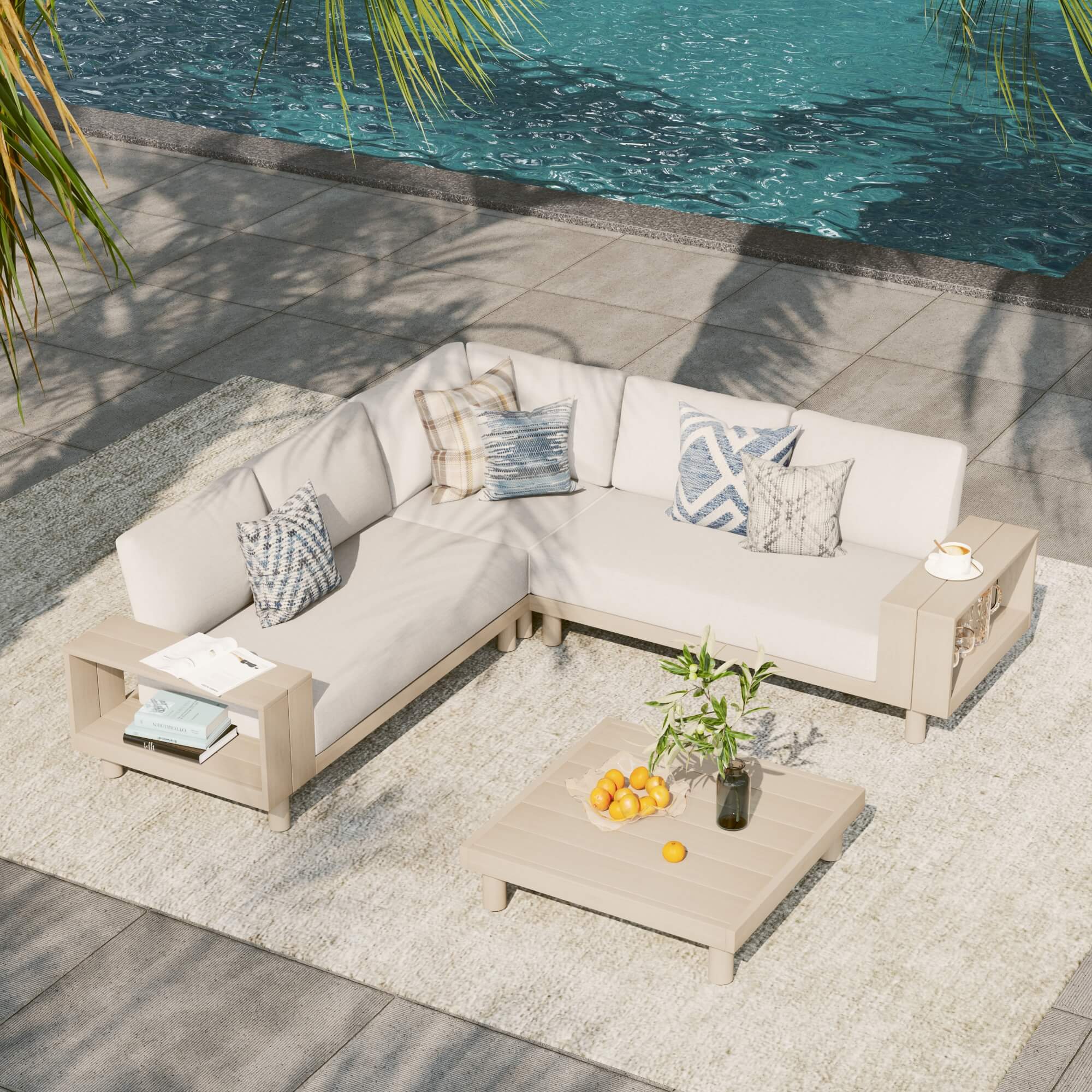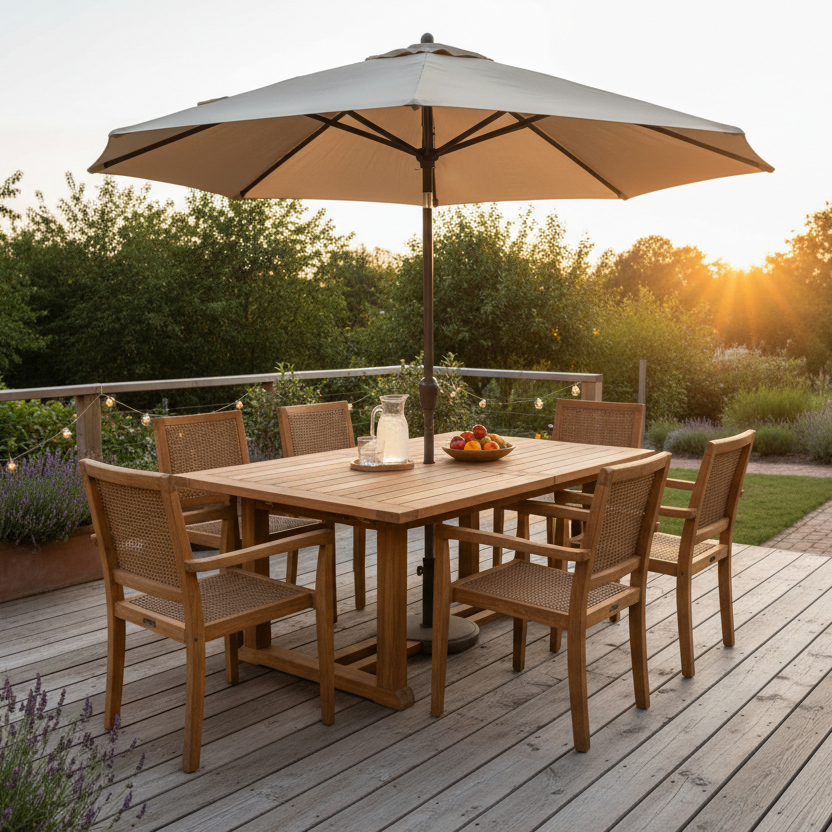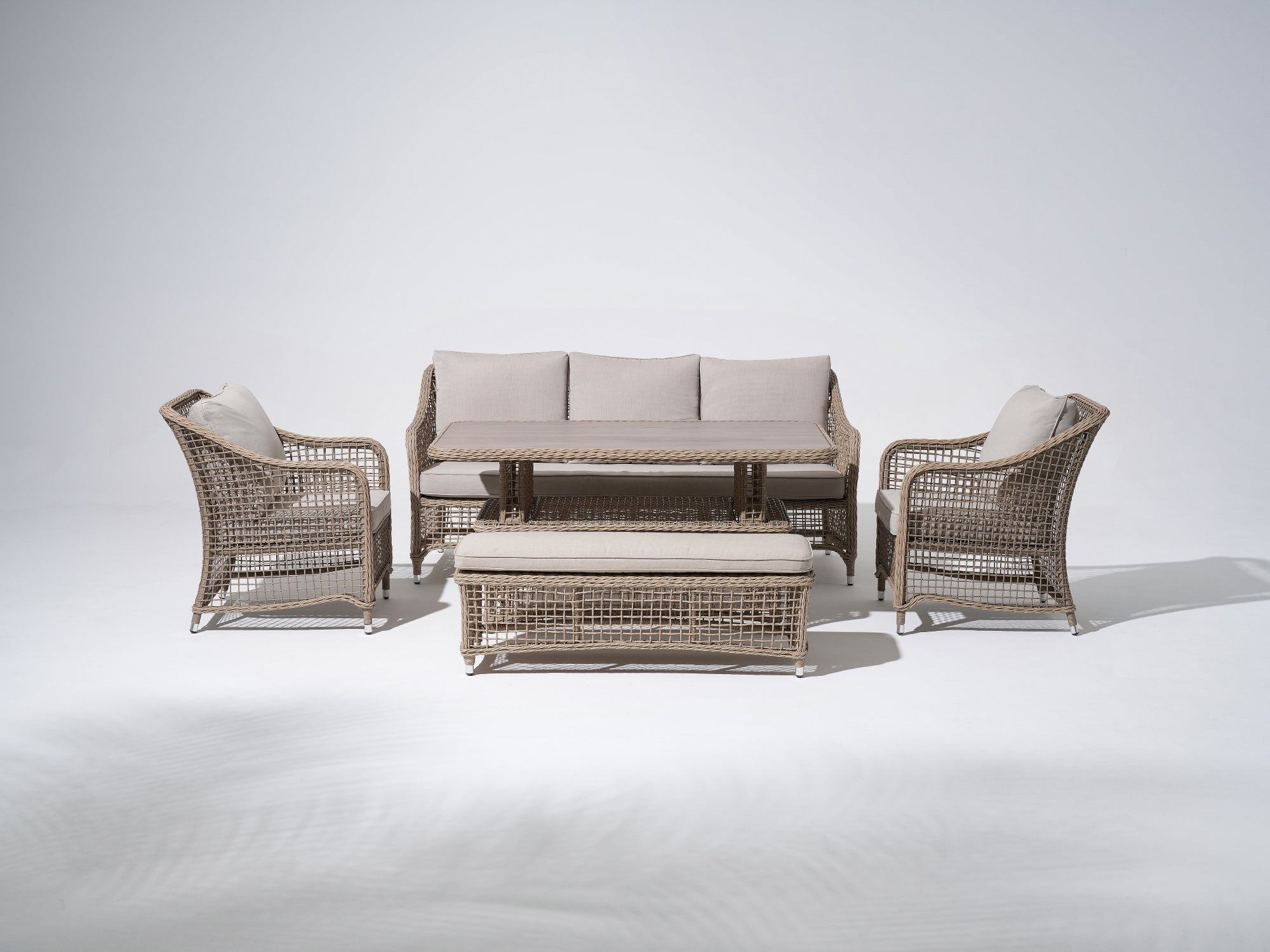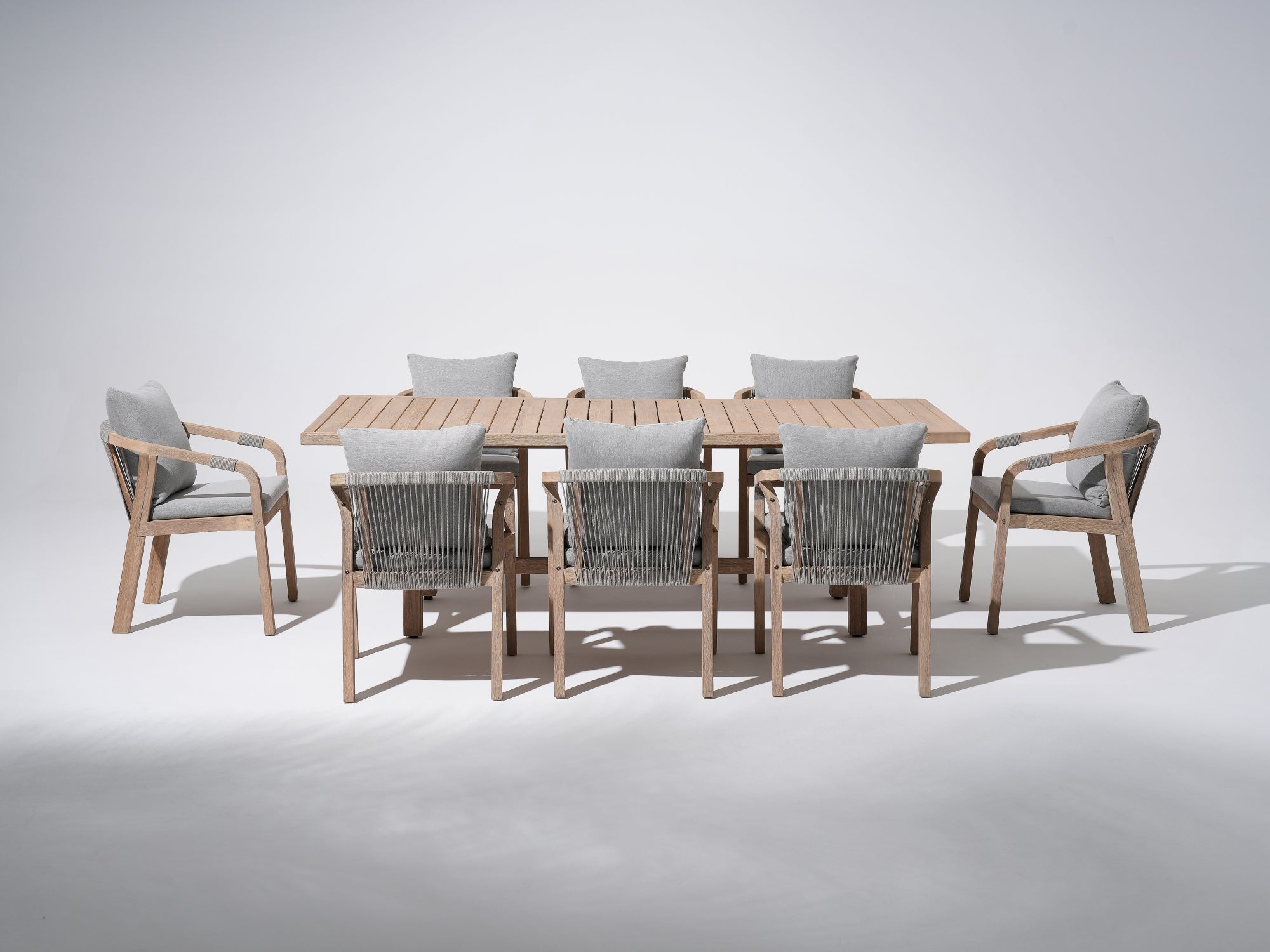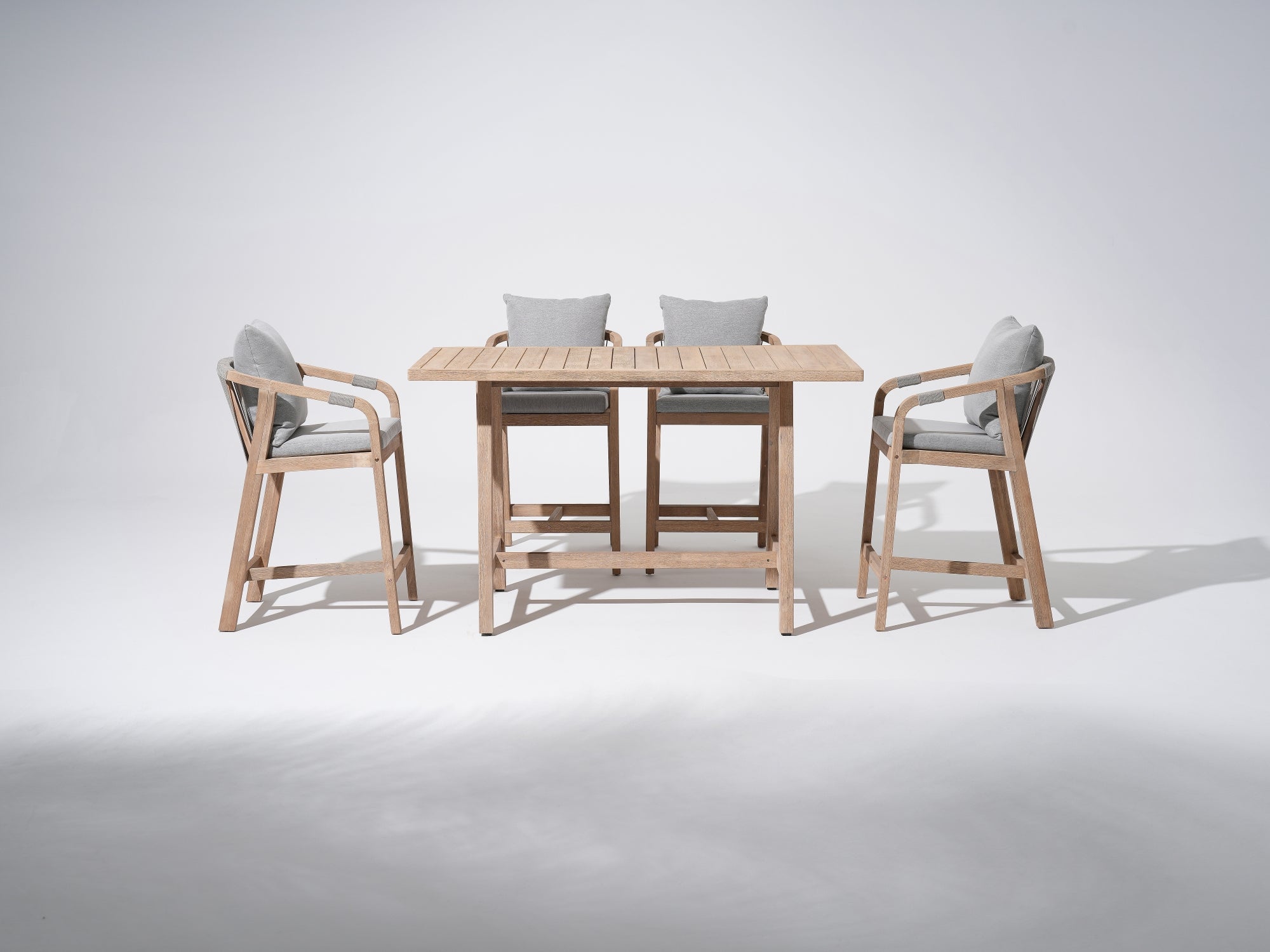The answer is YES! outdoor furniture can indeed be designed to be waterproof or at least water-resistant. Many outdoor furniture manufacturers produce items that are specifically engineered to withstand exposure to rain and moisture. These pieces are often constructed using materials that naturally repel water or are treated with coatings and finishes to make them waterproof. However, it's essential to note that the degree of waterproofing can vary depending on the specific materials and construction of the furniture.
1. Aluminum Outdoor Furniture

- Waterproofing: Aluminum outdoor furniture is typically waterproof because aluminum is resistant to rust and corrosion, making it highly effective at repelling moisture.
- Lifespan: Aluminum outdoor furniture can have a long lifespan, often lasting for many years. With proper care and maintenance, it can endure for decades without significant degradation. Its resistance to rust and corrosion contributes to its durability in outdoor settings.
This is the reason why Aluminum Outdoor Furniture stands out as one of the most favored choices for outdoor furnishings.
2. Plastic Outdoor Furniture

- Waterproofing: Plastic furniture is generally waterproof and resistant to moisture and rot.
- Lifespan: But plastic furniture tends to have a shorter lifespan as it can become brittle or fade over time due to UV exposure.
Plastic Outdoor Furniture can be quite cheap, but it offers less comfort and a shorter lifespan, so consider it carefully.
3. Wooden Outdoor Furniture

- Waterproofing: The waterproofing of wooden furniture depends on the wood type and whether it has been treated for waterproofing. Teak and cedar outdoor furniture are naturally resistant to water due to the natural oils and compounds in the wood. They have excellent waterproofing properties, which help prevent moisture penetration and decay. Other hardwoods, such as eucalyptus, also have some natural resistance to water, but they may benefit from additional waterproofing treatments or sealants to enhance their water resistance. Softwood outdoor furniture, like pine or fir, is less naturally resistant to water. Pressure-treated or chemically-treated wood is often more water-resistant than untreated wood.
- Lifespan: High-quality teak or cedar outdoor furniture, when well-maintained, can last for 20 years or more. Outdoor furniture made from other hardwoods, such as eucalyptus, may have a lifespan of 10 to 15 years with proper care and maintenance. Furniture made from softwoods like pine or fir typically has a shorter lifespan, often around 5 to 10 years. Well-maintained wooden outdoor furniture can last a long time, but it may require more upkeep to maintain its appearance and waterproofing.
Therefore, when selecting wooden outdoor furniture, please carefully check what kind of wood it is, as it significantly influences the overall user experience.
4. Metal Outdoor Furniture

- Waterproofing: Metal outdoor furniture, such as stainless steel and iron, typically has good inherent waterproofing properties. Stainless steel is highly resistant to corrosion and rust, while iron furniture can also be treated or coated to enhance its water resistance. These properties make metal furniture effective at repelling moisture, making them well-suited for outdoor use.
- Lifespan: The lifespan of metal outdoor furniture can be quite long, often lasting for many years. With proper care and maintenance, metal furniture can endure for decades without significant deterioration. Stainless steel, in particular, is known for its exceptional durability and resistance to rust and corrosion. Iron furniture may require periodic maintenance, such as painting or coating, to maintain its waterproofing and prolong its lifespan.
Therefore, when selecting wooden outdoor furniture, please carefully check what kind of wood it is, as it significantly influences the overall user experience.
5. Fabrics and Cushions

When selecting cushions for outdoor furniture, it's essential to consider their waterproofing capabilities, especially if your furniture will be exposed to the elements. Waterproof or water-resistant cushions can help prevent moisture absorption, mold, and deterioration due to rain or humidity. However, not all cushions are inherently waterproof, and it's perfectly fine to choose cushions that are not waterproof. You can easily put them indoors or in a waterproof storage box.
However, it is important to note that not all outdoor furniture is completely waterproof, and over time, exposure to harsh weather conditions can still cause damage and wear. To ensure the longevity of your outdoor furniture, it is advisable to take proper care and maintenance measures, such as covering the furniture during heavy rain or snow, or storing it indoors during the off-season. Regular cleaning and applying protective coatings can also help extend the lifespan of your outdoor furniture.




